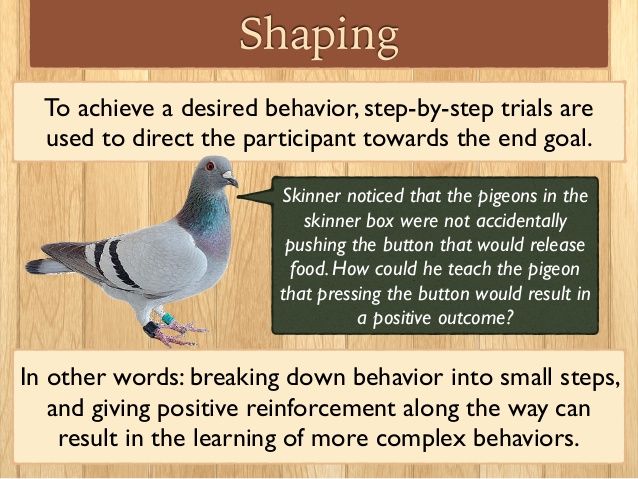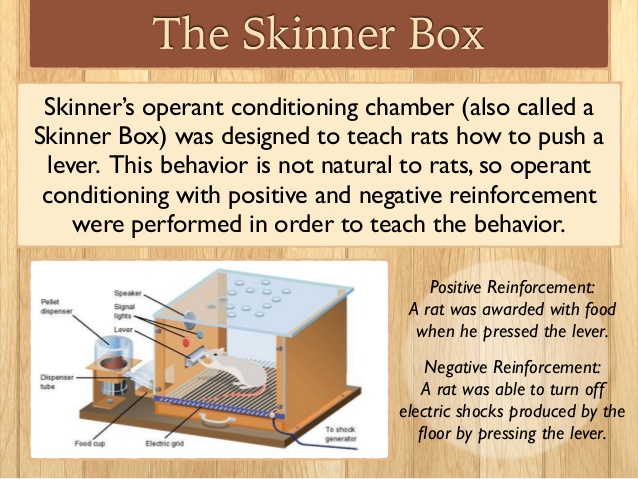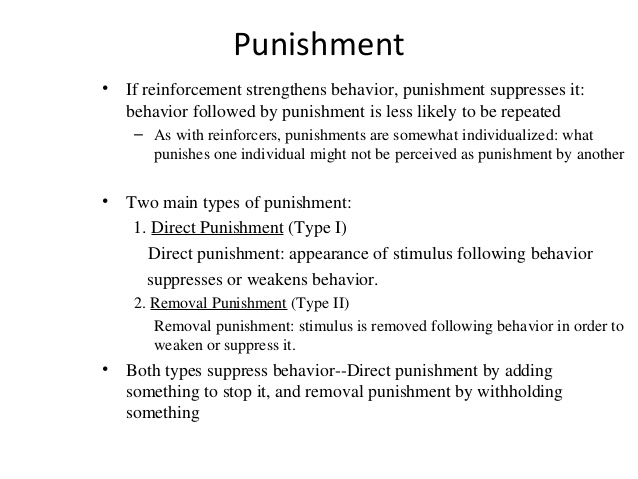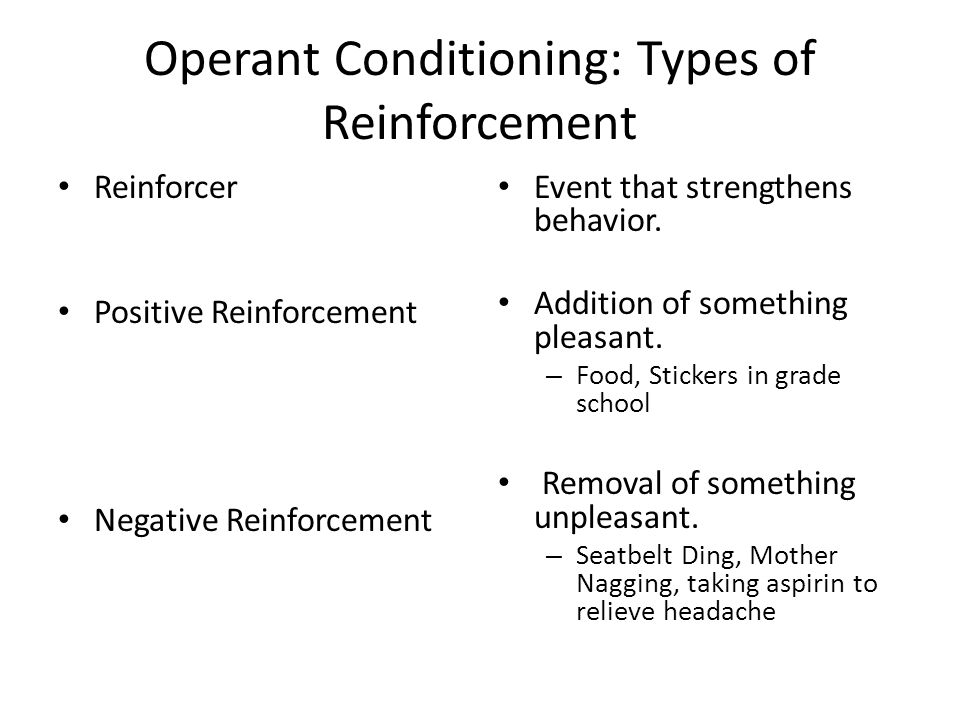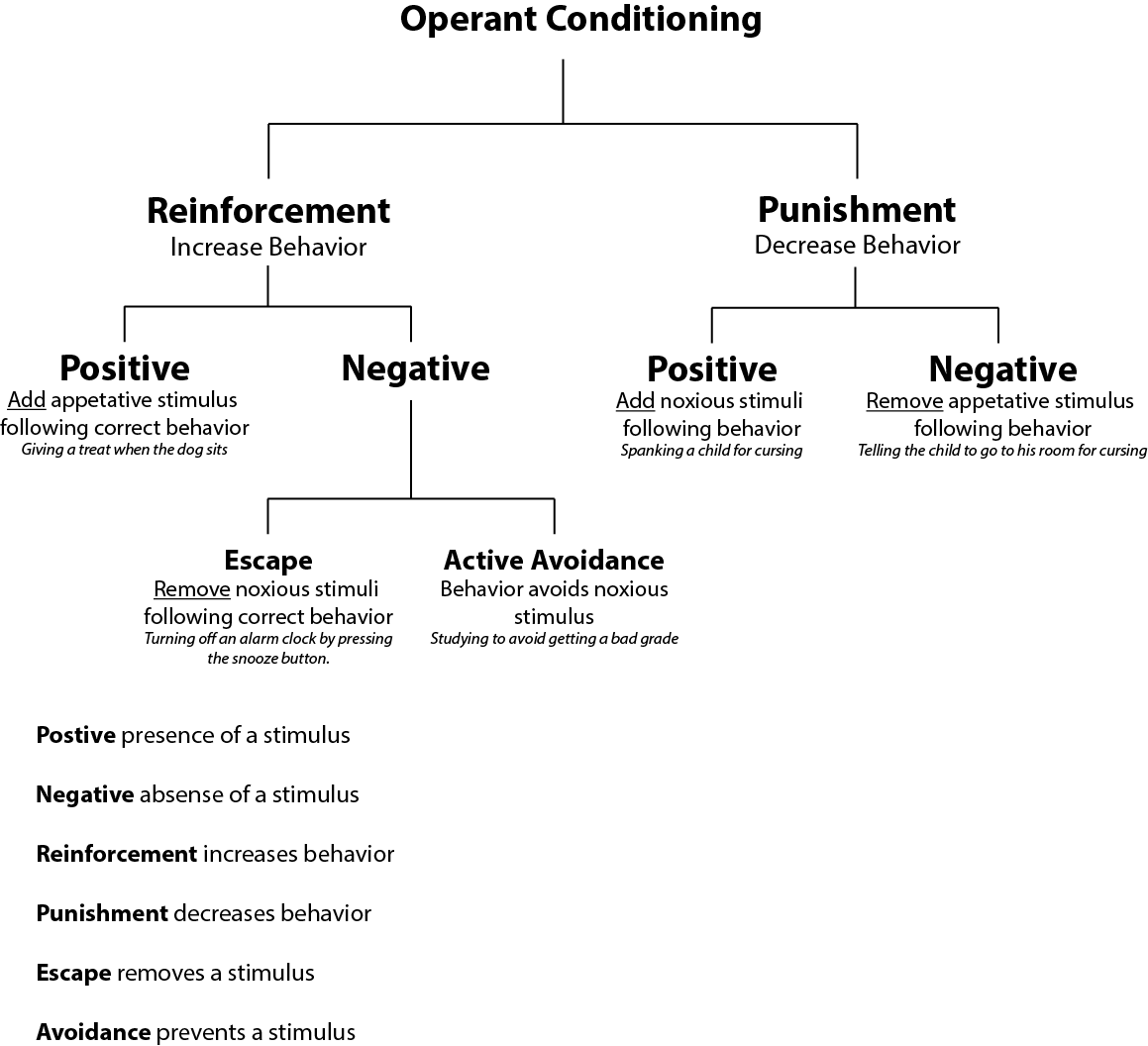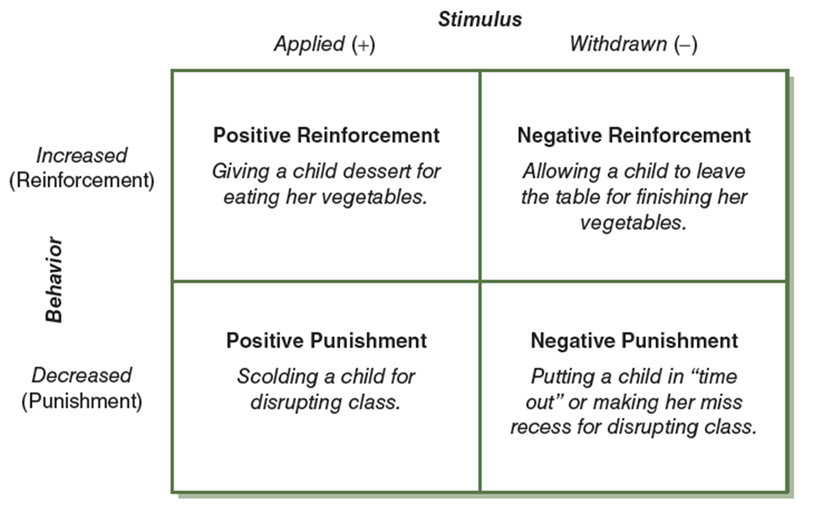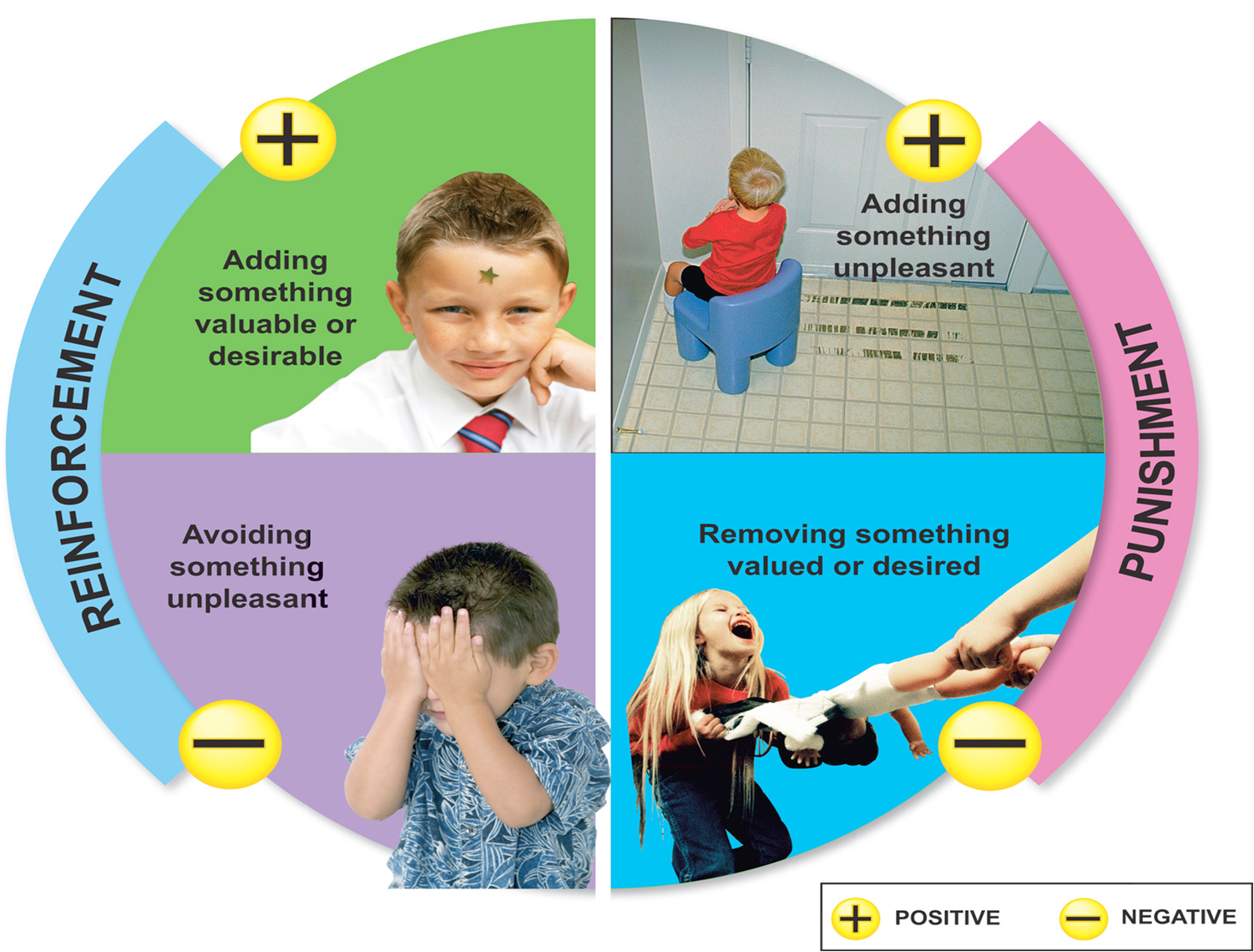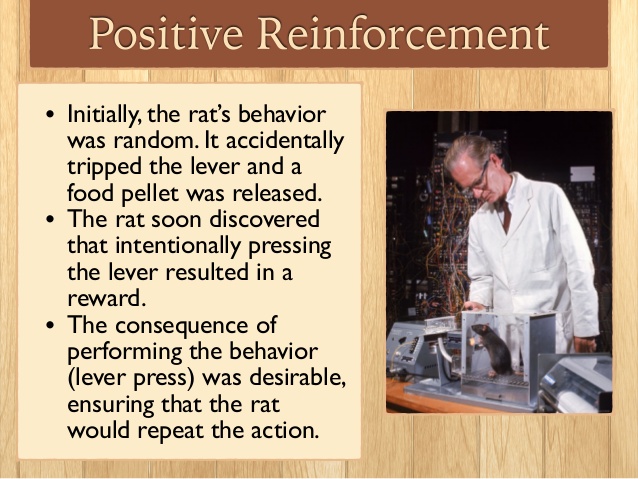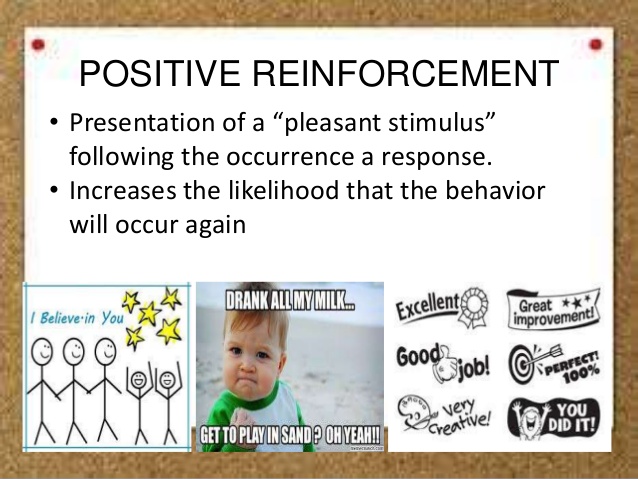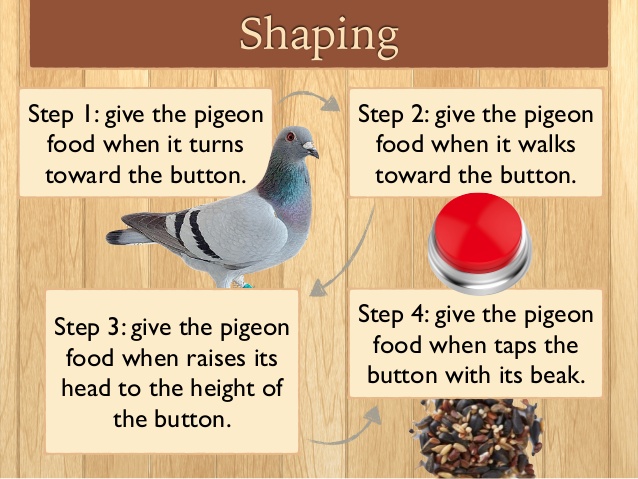Learning
Dr.Balan Stephen
Definition
Learning is a change in behaviour resulting from repeated practice
Both the environment and the behaviour interact to produce the learned change.
Types of Learning
Three types of learning.
1. Classical conditioning: in which learning is thought to take place as a result of the contiguity of the environmental events.
2. Operant conditioning: in which learning is thought to result from the consequences of a person’s action.
3. Social learning: This incorporates both classical and operant models of learning, but also considers a reciprocal interaction between the person and environment.
Operant Conditioning or Instrumental Learning
Theory by B.F. Skinner.
In this type of learning the subject is active and behaves in a way that produces a reward.
Thus learning occurs as a consequence of action.
Certain responses are reinforced by rewards.
For example a rat receives a reinforcing stimulus (food) only when it correctly responds by pressing a lever.
Food, approval, praise, good grades, or any other response that satisfies a need in an animal or a person can serve as a reward.
A freely moving organism behaves in a way that is instrumental in producing a reward. For example, a cat in a Thorndike puzzle box must learn to lift a latch to escape from the box. For this reason operant conditioning is sometimes called as instrumental conditioning.
Four kinds of Operant Conditioning
1. Primary reward conditioning.
2. Escape conditioning
3. Avoidance conditioning
4. Secondary reward conditioning.
Respondent and Operant Behaviour
Two types of behaviour.
1.Respondent behaviour which results from known stimuli and
2.Operant behaviour which is independent of stimulus (e.g. random or aimless movements of a rat in cage).
A reinforcer is anything that maintains a response or increases its strength (reward).
Reinforcement
Described as primary, when they are not based on previous learning (e.g. the need for food, water)
Described as secondary when they are based on previously rewarded learning. e.g. giving money to a child with good grades).
One can vary the schedule of reward (reinforcement) - programming.
The interval between the rewards may be fixed or variable.
Fixed –ratio schedule. Variable –ratio schedule
Fixed interval schedule variable interval shedule
Positive Reinforcement
In operant conditioning, positive reinforcement is the process by which certain consequences of a response increase the probability that the response will reccur.food, water, praise, and money are positive reinforcers. On the other hand, events aversive to some may be reinforcing for others. For example, the behaviour of some children is reinforced by scolding, which after all is a form of attention. Many psychoactive substances also appear to be positive reinforces, including opium, cocaine, nicotine and barbiturates. Positive reinforcement is a useful therapeutic method for severely affected psychiatric patients in producing behaviour modifications.
Negative Reinforcement
In operant conditioning, Negative reinforcement is a process by which a response that leads to the removal of an aversive event is increased. For example, a teenager mows the lawn to avoid parental complaints, or animal jumps off a grid to escape a painful shock. Any behaviour that enables a person or animal to avoid or escape a punishing consequence is strengthened. Negative reinforcement is not punishment. Punishment is an aversive stimulus that is presented specifically to weaken or supress an undesired response. Punishment reduces the probability that a response will reoccur.
Operant conditioning is a type of learning where behavior is controlled by consequences. Key concepts in operant conditioning are positive reinforcement, negative reinforcement, positive punishment and negative punishment.


